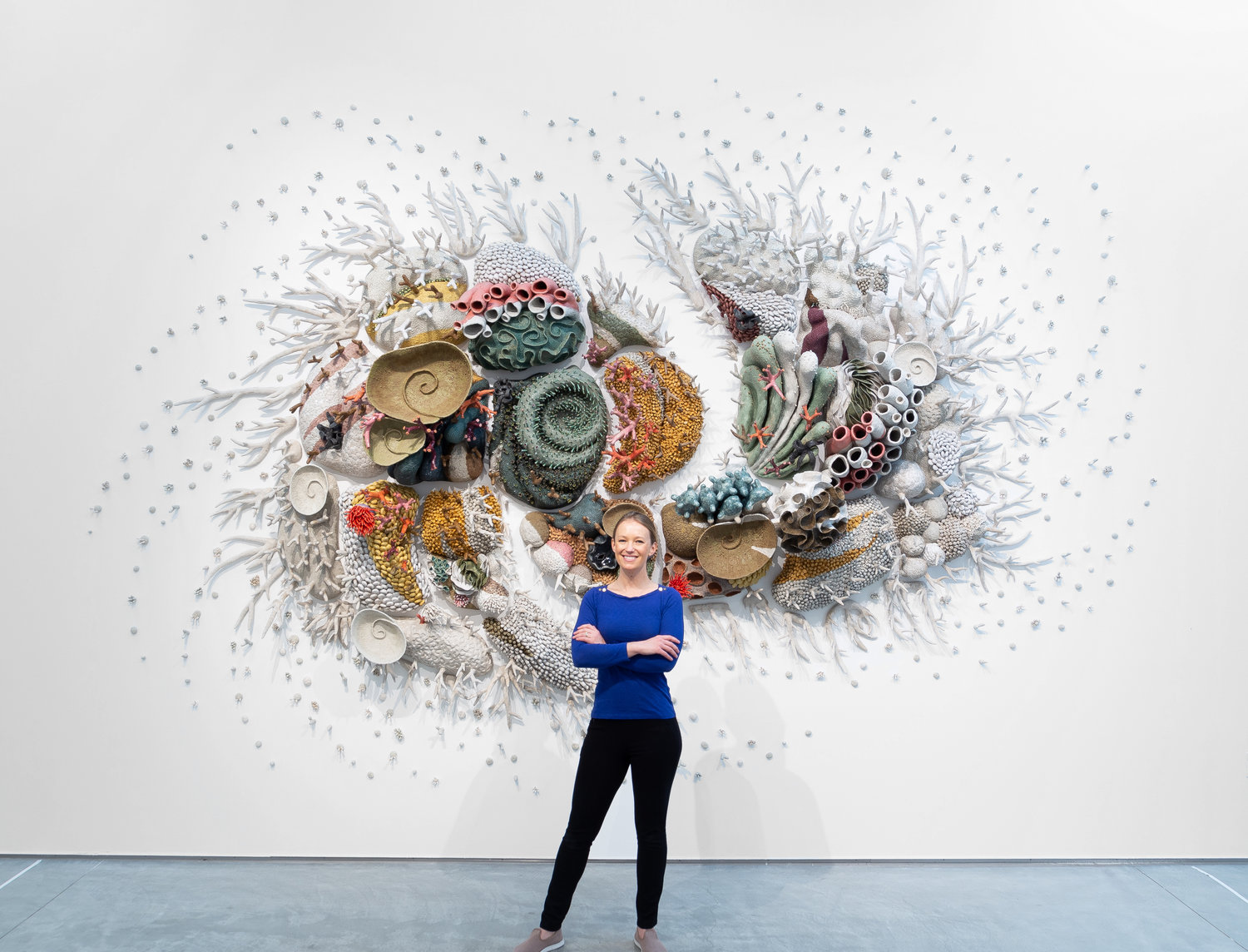Her interest in the ocean and its peculiar inhabitants — creatures like anemones and sea urchins — inspired in her a desire to better understand the region's ecosystems. Armed with her Brown Master’s degree in environmental studies, together with thesis credits from the Rhode Island School of Design, Mattison has spent the last decade creating alien worlds of her own through large-scale ceramic sculpture.

At the center of Mattison’s sculptures are brightly-colored coral, made from stoneware and porcelain, which fade to a dull white color as they span outwards. These muted edges are a proxy for the process of coral bleaching, which occurs as waters warmed by climate change sicken coral skins and reveal their white calcium carbonate shell. Unlike in nature, Mattison’s sculptures enable the coral’s transition from healthy, diverse, and colorful to bleached white to be seen all at once.
Mattison hopes to spark a sense of curiosity in her audience, recreating a world much like the one that caught her attention in California.
“Maybe [viewers will] at least ask why that transition is happening, and then be curious enough to learn more about climate change and what's going on,” she says. “I think that sense of curiosity and exploration is one of the most important parts of getting people excited about conservation”.
Mattison had always wanted to leverage her skills as an artist to inspire people to change their lifestyle choices and develop a personal sense of caring for the environment; however, it took some time for her to develop her artistic voice and message. She recalls learning much from her heroes in the arts and in environmental conservation about messaging and communication. “[Focusing on the] doom and gloom just turns people off,” she says. “It makes people kind of shut down”.
Rather than appealing to the more cerebral aspects of environmental conservation, Mattison realized that she wanted to make her viewers feel climate change.
“Understanding [climate change] is one thing,” she says, “but actually feeling that you have a stake in it, and that you can make a difference in terms of conserving that or changing that fate, I think is much more powerful”.
Mattison recalls arriving at Brown, enthusiastic about using her art to engage people with the environment. “I wanted to use my art to inspire conservation, but I didn't know how to do that, and so I came to Brown, determined to figure out how,” she says. Enrolling classes both at Brown and RISD allowed her to explore ceramics and conservation biology simultaneously.
Mattison fondly recounts telling fellow students in either class about what I had been learning and the other ones. “It was just a melding that made me think about conservation and the creation of art… in a different, unorthodox way,” she says.
Mattison began creating her large-scale sculptures in 2011, in a studio in Providence: a place she describes as a “funky space [with] 14 foot ceilings and trains going by outside.” Today, her work has been exhibited in the U.S. Department of State’s Office of Art in Embassies, Lindblad Expeditions’ National Geographic Endurance ship, and various prominent art institutions.